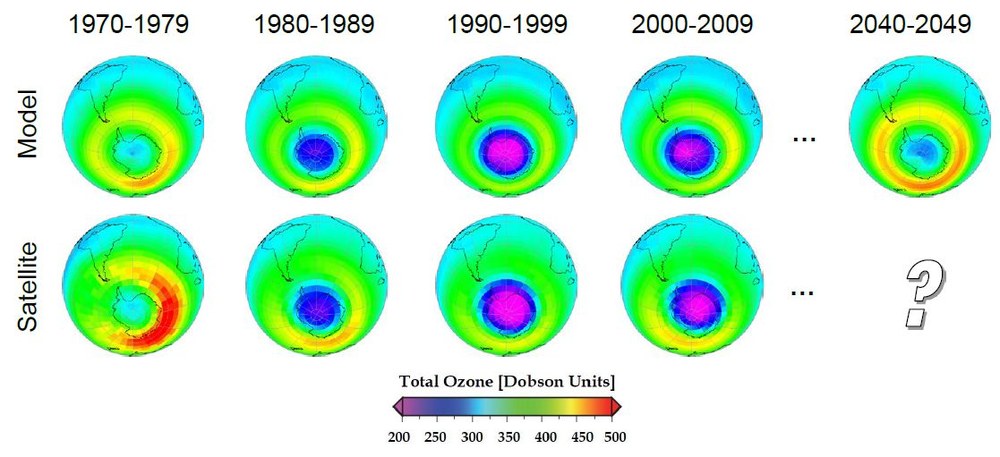Water vapour and ozone in the atmosphere
Identification, explanation and quantification of variations of climate relevant atmospheric trace gases, in particular ozone and water vapour, but also of UV radiation and
climate, are central tasks of atmospheric research.
Concentrations of stratospheric ozone were significantly reduced in the last decades before the turn of the millennium, especially over the Antarctic in spring (ozone hole). In the coming years the recovery of the ozone layer will strongly depend on the reduction of the CFC amount in the atmosphere. The further evolution of the ozone layer will be affected by meteorological and chemical quantities which are influenced by climate change.

Water vapour in the stratosphere and troposphere is the most important atmospheric greenhouse gas. It is not only important for weather and climate (e.g. clouds in the troposphere) but also has strong impact on the formation of polar stratospheric clouds as well as on atmospheric chemistry and therefore also on ozone. With the coupled climate-chemistry model EMAC of DLR the recent evolution of the stratospheric ozone layer has been reproduced. Long-term simulations predict that the recovery of the ozone layer should be completed around the year 2050. The further evolution of the ozone layer after 2050 will be affected by temperature changes; in the stratosphere lower temperatures are expected due to enhanced greenhouse gas concentrations (in particular CO2). Possible regional differences of the ozone development are currently under investigation with atmospheric models.
Among others the evaluation of climate simulation results are carried out by means of satellite data and aircraft measurements. Furthermore, in-situ instruments and remote-sensing sensors are developed and are installed on the DLR research aircraft Falcon and HALO for worldwide measurements.
